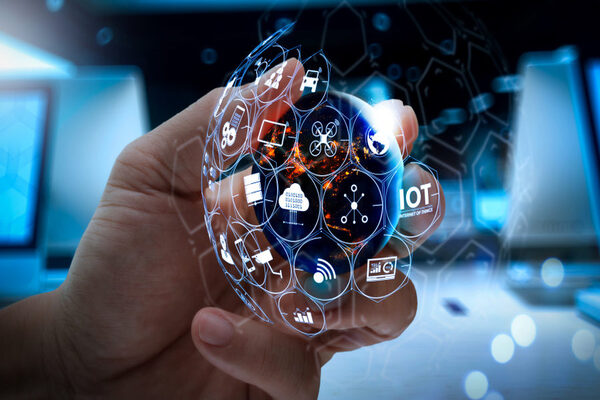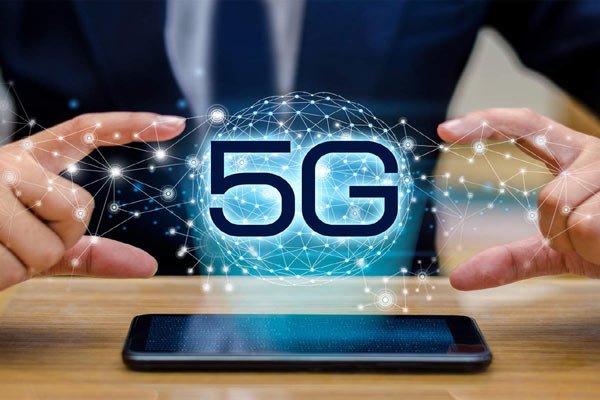In the rapidly advancing field of technology, innovation is a driving force behind change and the architect of the future. As we stand on the cusp of a new year, several emerging technologies are poised to make a significant impact on various industries and our daily lives.

Let’s explore five of these advanced technologies that are going to transform the game in the coming year.
5G Technology
The launch of 5G technology is all set to change the methods of communication around the world. 5G technology will allow quicker data transfer and lower latency; it will open the door for the broad adoption of virtual reality (VR), augmented reality (AR), and the Internet of Things (IoT). The development of 5G networks will open up new opportunities for the transportation, healthcare, and smart city sectors in the coming year. Remote surgery, autonomous vehicles, and real-time monitoring of critical infrastructure are just a few examples of the transformative applications enabled by 5G. Consumers can also expect improved mobile experiences, with faster download and streaming speeds, as well as enhanced connectivity for smart devices in homes and businesses. Additionally, customers can anticipate better mobile experiences with quicker streaming and download times as well as greater connectivity for smart devices in homes and offices.

Artificial Intelligence and Machine Learning
Machine learning and Artificial Intelligence continue to be at the forefront of technological innovations as they are influencing many industries including healthcare, manufacturing, and finance. We can expect more advancements in these technologies in the coming years, which will allow machines to analyze and interpret enormous amounts of data with unmatched accuracy. If we talk about the healthcare sector, Artificial Intelligence is transforming drug discovery, diagnostics, and personalized medicine. Machine Learning algorithms can sift through patient data to identify patterns and predict disease outcomes, leading to more precise and timely interventions. In finance, AI-powered tools help in fraud identification, risk assessment, and investing strategies. We can anticipate more advancement in computer vision, robotics, and natural processing as Artificial Intelligence and Machine Learning algorithms are becoming more refined, further blurring the line between machine and human capabilities. As AI and ML algorithms become more refined, we can anticipate breakthroughs in natural language processing, computer vision, and robotics, further blurring the line between human and machine skills.

Edge Computing
Edge computing emerged as a response to the need for quicker and more efficient processing capabilities as the amount of data generated by IoT devices continues to soar. Unlike traditional cloud computing, which relies on centralised data centers, edge computing brings computation closer to the source of the data. In the upcoming year, we can expect edge computing to play a pivotal role in enabling real-time data processing and reducing latency. This is especially important for applications like industrial automation, smart cities, and driverless cars that need to make decisions quickly. In addition to increasing data analysis speed, edge computing relieves pressure on centralized cloud infrastructure. This distributed approach to computing is poised to become a key enabler for the seamless integration of emerging technologies like 5G, AI, and IoT.

Biotechnology and CRISPR Gene Editing
Biotechnology innovations, specifically in the area of CRISPR editing have great potential to transform the healthcare and agriculture sector. With the use of CRISPR technology, scientists can accurately alter DNA, paving the way for the development of genetically engineered organisms with desired features as well as targeted treatments for genetic illnesses. We should expect advances in CRISPR applications in the coming year, such as the production of novel treatments for genetic illnesses and genetically engineered crops with increased productivity and durability. The ethical considerations surrounding gene editing will continue to be a topic of discussion, highlighting the need for responsible and transparent use of this powerful technology. The convergence of biotechnology with other emerging technologies, such as AI and robotics, will further accelerate progress in areas like drug discovery and personalised medicine.

Blockchain and Decentralized Finance (DeFi)
Blockchain technology, originally known for its association with cryptocurrencies like Bitcoin, has evolved beyond digital currencies to become a cornerstone of decentralized systems. It is anticipated that the focus will move to decentralized finance, or DeFi, in the coming year. DeFi platforms leverage blockchain to create open and permissionless financial systems, providing services such as lending, borrowing, and trading without traditional intermediaries. Traditional banking models could be disrupted and financial inclusion could rise as a result of this democratization of finance. The development of smart contracts—self-executing agreements with the terms of the contract encoded directly into the code—will be essential to the growth of DeFi.As blockchain technology matures, we can anticipate increased adoption in areas beyond finance, including supply chain management, healthcare, and identity verification.

Conclusion
These five cutting-edge technologies will be driving technological progress in the future year, which looks to be very interesting.From the continued evolution of artificial intelligence and the widespread implementation of 5G technology to the decentralization of finance through blockchain and the transformative potential of edge computing and CRISPR gene editing, the future is brimming with possibilities. These technologies will surely change the way we live, work, and interact with the world as they develop and find uses in a wide range of businesses.Keeping a close eye on these developments will be essential for businesses, researchers, and enthusiasts alike as we embark on another year of unprecedented technological progress.




















